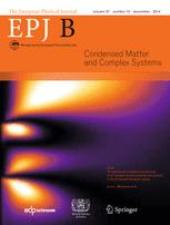Mar 17 2015
In the eyes of physicists, magnetic molecules can be considered as nanoscale magnets. Remotely controlling the direction in which they rotate, like spinning tops, may intuitively be difficult to achieve. However, Russian physicists have just demonstrated that it is theoretically possible to do so. They have shown that a change of direction in the circular polarisation of an external magnetic field leads to a change in the direction of the mechanical rotation of the molecule.

These findings by Iosif Davidovich Tokman and Vera Il‘inichna Pozdnyakova from the Institute for Physics of Microstructures, Russian Academy of Sciences, Nizhny Novgorod, Russia, were recently published in EPJ B. Possible applications of the phenomenon include rotating magnetic molecules used as molecular rotors to power molecular motors.
The authors were inspired by recent experimental observations, in which molecules that are not magnetic can freely rotate around a fixed axis on the surface of crystals. Tokman and his colleague had the idea of using magnetic molecule to remotely control their rotation using a circularly polarised magnetic field. The authors then developed a theoretical explanation to this gyromagnetic phenomenon at the nanometric scale, which was already well known at the macroscopic scale. The rotational speed of a molecular magnet around its own axis, they have shown, depends on the polarisation and frequency of an external alternating magnetic field.
To provide a more comprehensive picture of the molecular rotation, they relied on classical equations - used at macroscopic-scale - to explain the motion for spin degrees of freedom, which can be polarised. They then combined them with quantum mechanics - typically used for sub-microscopic-scale entities - to describe the mechanical rotational degrees of freedom and their interaction with the spin polarisation. These findings have yet to be confirmed experimentally.
Reference:
I.D. Tokman and V. I. Pozdnyakova (2015), Mechanical rotation of nanomagnets through interaction with an electromagnetic wave, Eur. Phys. J. B 88: 51,
DOI: 10.1140/epjb/e2015-50438-6